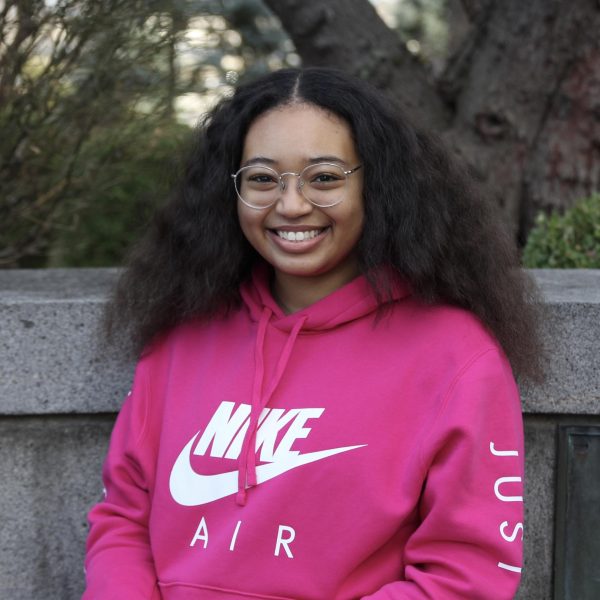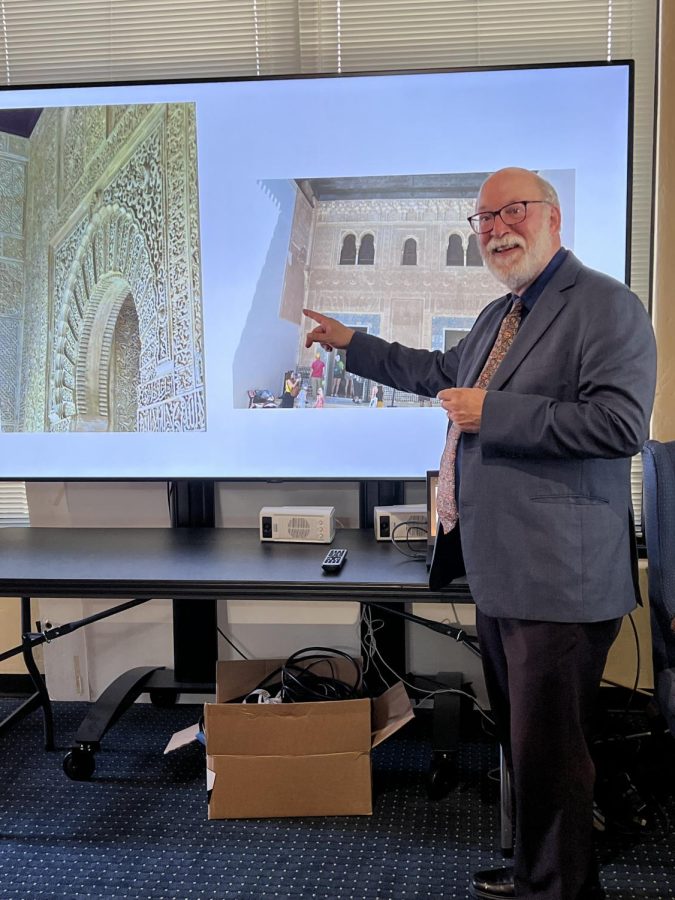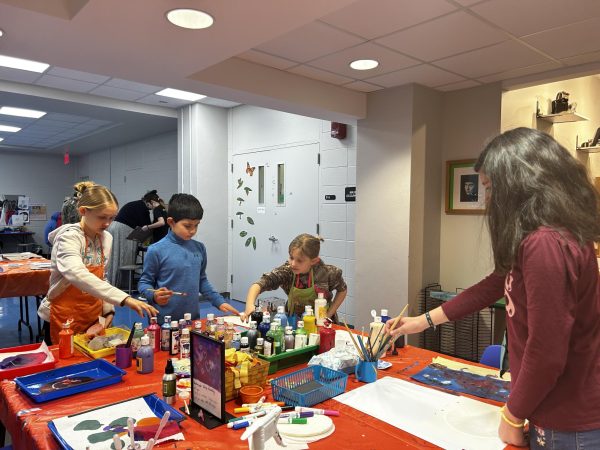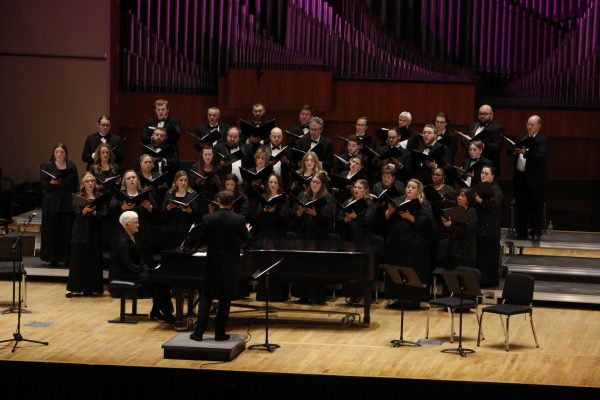Prasch discusses architectural history at International Brown Bag lecture
Tom Prasch smiles for a picture as he discusses Moorish art at a recent International Brown Bag Lecture. The lecture was held Sept. 7 in the International House.
Sept. 7, the International Programs held an International Brown Bag Lecture featuring Tom Prasch, professor and chair of history, who titled his presentation “Thinking about the Alhambra: From Owen Jones to Now.”
Prasch focused on Owen Jones, a famous architect and designer during the 1800s. Jones traveled to the Alhambra – a Moorish palace in Granada, Spain – in an attempt to revitalize the ornamental arts of the Western World. Based on his visit, he came up with a theory of color, which stated that the use of primary colors (red, blue and yellow) rather than whites in designing buildings would bring more depth and life into them.
Jones went on to use this theory in many of his works, including his painting scheme for the Crystal Palace in 1851 and his work for the South Kensington Museum (now the Victoria & Albert).
Recently, Prasch went to the Alhambra through the Sweet Sabbatical program at Washburn, which encourages professors to experience more outside of Kansas and pursue their academic interests.
Prasch showed various photos he’d taken in the palace throughout his presentation. He noted the “ornaments” used in the palace’s design as each wall was filled with colorful and intricate art. The building had pointed arches making the architecture unique as well.
After the lecture, the floor was open to the audience for questions and comments. Many of the attendees expressed their fascination with the design of the palace and reiterated facts they’d found interesting.
Sara Stepp, academic curator for the Mulvane Art Museum, had never been to a Brown Bag Lecture before, but was glad she attended.
“I found his presentation really engaging. I thought he was a good speaker and that he was really compelling and I just loved seeing all the pictures. So yeah, it was a fantastic talk,” said Stepp.
Andy Vogel, coordinator of student recruitment and retention in the office of International Programs, also enjoyed the lecture, having relatively little knowledge of art history himself.
“Honestly, I didn’t know much about Spain, especially the Moors and the creation of these temples or architectural structures,” said Vogel. “Sometimes I just go to these things and I don’t know what to expect. I go, check it out and learn something new.”
Prasch appreciates these lectures as well because it’s an opportunity to inform people about his knowledge of the world, which is why he believes International Brown Bag Lectures are important for students on campus.
“I think this series, in particular, is good at emphasizing how connected Washburn is with the world,” said Prasch. “We have international students. We’ve also got faculty that are doing international travel, that have been recruited from international places, and so hearing their perspectives is important.”
Vogel also added his thoughts on the importance of these lectures and having an awareness of international events in history.
“I think being aware of different events going on around the world is important for Washburn students and people in our community, so that they can face these challenges coming up in a more reasonable, compassionate, sustainable way than we have in the last 100 years,” said Vogel.
Vogel went on to describe the world now as a global community through technology. He believes that having international competency helps people understand worldwide issues and allows them to learn more about themselves in this society.
The International Programs will be continuing their International Brown Bag Lecture series this semester. Their next lecture will be on Sept. 21 and will feature Tony Silvestri, professor of history, who will discuss his trip to the west of Ireland. All students, faculty and staff are invited.
Edited by Justin Shepard and Alijah McCracken
Your donation will support the student journalists of Washburn University. Your contribution will allow us to purchase equipment and cover our annual website hosting costs.
















Thomas • Sep 14, 2022 at 10:44 pm
Great article